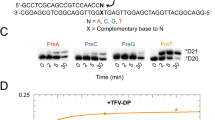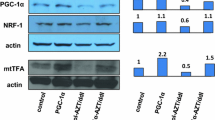Abstract
Antiretroviral nucleoside analogs used in highly active antiretroviral therapy (HAART) are associated with cardiovascular and other tissue toxicity associated with mitochondrial DNA depletion, suggesting a block in mitochondrial (mt)-DNA replication. Because the triphosphate forms of these analogs variably inhibit mt-DNA polymerase this enzyme has been promoted as the major target of toxicity associated with HAART. We have used isolated mitochondria from rat heart to study the mitochondrial transport and phosphorylation of thymidine and AZT (azidothymidine, or zidovudine), a component used in HAART. We demonstrate that isolated mitochondria readity transport thymidine and phosphorylate it to thymidine 5′-triphosphate (TTP) within the matrix. Under identical conditions, AZT is phosphorylated only to AZT-5′-monophosphate (AZT-MP). The kinetics of thymidine and AZT agest negative cooperatively of substrate interaction with the enzyme, consistent with work by others on mitochondrial thymidine kinase 2. Results show that TMP and AZT-MP are not transported across the inner membrane, suggesting that AZT-MP may accumulate with time in the matrix. Given the lack of AZT-5′-triphosphate (AZT-TP), it seems unlikely that the toxicity of AZT in the heart is mediated by AZT-TP inhibition of DNA polymerase γ. Rather, our work shows that AZT is a potent inhibitor of thymidine phosphorylation in heart mitochondria, having an inhibitory concentration (IC)50 of 7.0±0.9 μM. Thus, the toxicity of AZT in some tissues may be mediated by disrupting the substrate supply of TTP for mt-DNA replication.
Similar content being viewed by others
References
Lewis, W. and Dalakas, M.C. (1995). Mitochondrial toxicity of antiviral drugs. Nat. Med. 1:417–421.
Benbrik E., Chariot, P. Bonavaud, S., Ammi-Satd, M., Frisdal, E., Rey, C., et al. (1997). Cellular and mitochondrial toxicity of zidovudine (AZT), didanosine (ddI) and zalcitabine (ddC) on cultured human muscle cells. Neurol. Sci. 149:19–25.
Barile, M., Valenti, D., Quagliariello, E., and Passarella, S. (1998). Mitochondrial as cell targets of AZT (Zidovudine). Gen. Pharmacol. 31:531–538.
Arnaudo, E., Dalakas, M., Shanske, S. Moraes, C.T., Dimauro, S., and Schon, E.A. (1991). Depletion of muscle mitochondrial DNA in AIDS patients with zidovudine-induced myopathy. Lancet 337:508–510.
Simpson, M.V., Chin, C.D., Keilbaugh, S.A., Lin, T.S., and Prusof, W.H. (1989). Studies on the inhibition of mitochondrial DNA replication by 3′-azido-3′-deoxythymidine and other dideoxynucleoside analogs which inhibit HIV-1 replication. Biochem. Pharmacol 38:1033–1036.
Lewis, W., Gonzalez, B., Chomyn, A., and Papoian, T.J. (1992). Zidovudine induces molecular, biochemical, and ultrastructural changes in rat skeletal muscle mitochondria. Clin. Invest. 89:1354–1360.
Lewis W., Simpson, J.F., and Meyer, R.R. (1994). Cardiac mitochondrial DNA, polymerase-γ is inhibited competitively and noncompetitively by phosphorylated zidovudine. Circ. Res. 74:344–348.
Lim, S.E. and Copeland, W.C. (2001). Differential incorporation removal of antiviral deoxynucleosides by human DNA polymerase γ. J. Biol. Chem. 276:23616–23623.
Martin J.L., Brown C.E., Matthews-Davis N., and Reardon J.E. (1994). Effects of antiviral nucleoside analogs on human DNA polymerases and mitochondrial DNA synthesis. Antimicrob. Agents Chemother. 38:2743–2749.
Johnson, A.A., Ray, A.S., Hanes, J., Suo, Z., Colacino, J.M., Anderson, K.S., et al. (2001). Toxicity of antiviral nucleoside analogs and the human mitochondrial DNA polymerase. J. Biol. Chem. 276:40847–40857.
Sales, S.D., Hoggard, P.G., Sunderland, D., Khoo, S., Hart, C.A., and Back, D.J. (2001). Zidovudine phosphorylation and mitochondrial toxicity in vitro. Toxicol., Appl. Pharmacol. 177:54–58.
Lavie, A., Schlichting, I., Vetter, I.R., Konrad, M., Reinstein, J., and Goody, R.S. (1997). The bottleneck in AZT activation. Nat. Med 3:922–924.
Lavie, A., Vetter, I.R., Konrad M., Woody R.S., Reinstein, J., and Schilichting, L. (1997). Structure of thymidylate kinase reveals the cause behind the limiting step in AZT activation. Nat. Struct. Biol. 4:601–604.
Frick, L.W., Nelson, D.J., St Clair, M.H., Furman, P.A., and Krenitsky, T.A. (1988). Effects of 3′azido-3′-deoxythymidine on the deoxynucleotide triphosphate pools of cultured human cells. Biochem. Biophys. Res. Commun. 154:124–129.
Hobbs, G.A., Keilbaugh, S.A., Rief, P.M., and Simpson, M.V. (1995). Cellular targets of 3′azido-3′-deoxythymidine: an early (non-delayed) effect on oxidative phosphorylation. (1995). Biochem. Pharmacol. 50:381–390.
Johansson, M., Van Rompay, A.R., Degreve, B., Balzarini, J., and Karlsson, A. (1999). Cloning and characterization of the multisubstrate deoxyribonucleoside kinase of Drosophila melanogaster. J. Biol. Chem. 274:23814–23819.
Wang, L., Karlsson, A., Arner, E.S.J., and Eriksson, S. (1993). Substrate specificity of mitochondrial 2′deoxyguanosine kinase. J. Biol. Chem. 268:22847–22852.
Wang, L., Munch-Petersen, B., Herrstrom Sjoberg, A., Hellman, U., Bergman, T., Jornvall, H., et al. (1999). Human thymidine kinase 2: molecular cloning and characterization of the enzyme activity with antiviral and cytostatic nucleosid substrates. FEBS Lett. 443:170–174.
Mazzon, C. Rampazzo, C., Chaira Scaini, M., Gallinaro, L., Karlsson, A., Meir, C., et al. (2003). Cytosolic and mitochondrial deoxyribonucleotidases: activity with substrate analogs, inhibits and implications for therapy. Biochem. Pharmacol. 66:471–479.
Van Rompay, A.R., Johansson, M., and Karlsson, A. (2000). Phosphorylation of nucleosides and nucleoside analogs by mammalian nucleoside monophosphate kinases. Pharmacol. Ther. 87:189–198.
Kowluru, A., Tannous, M., and Chen, H.Q. (2002). Localization and characterization of the mitochondrial isoform of the nucleotide diphosphate kinase in the pancreatic β cell: evidence for its complexation with mitochondrial succinyl-CoA synthetase. Arch. Biochem. Biophys. 398: 160–169.
Dolce, V., Fiermonte, G., Runwick, M.J., Palmieri, F., and Walker, J.E. (2000). The human mitochondrial deoxynucleotide carrier and tis role in the toxicity of nucleoside antivirals. Proc. Natl. Acad. Sci. USA 98:2284–2288.
Munch-Petersen, B., Cloos, L., Tyrsted, G., and Eriksson, S. (1991). Diverging substrate specificity of pure human thymidine kinases 1 and 2 against antiviral dideoxynucleosides. J. Biol. Chem. 266:9032–9038.
Saada, A., Shaag, A., Mandel, H., Nevo, Y., Eriksson, S., and Elpeleg, O. (2001). Mutant mitochondrial thymidine kinase in mitochondrial DNA depletion myopathy. Nat. Genet. 29:342–344.
McKee, E.E., Grier, B.L., Thompson, G.S., and McCourt, J.D. (1990). Isolation and incubation conditions to study heart mitochondrial protein synthesis. Am. J. Physiol. 258: E492-E502.
McKee, E.E., Bentley, A.T., Smith, R.M., and Ciaccio, C.E. (1990). Origin of guanine nucleotides in isolated heart mitochondria. Biochem. Biophys. Res. Commun. 257:466–472.
McKee, E.E., Bentley, A.T., Smith, R.M., Kraas, J.R., and Ciaccio, C.E. (2000). Guanine nucleotide transport by atractyloside-sensitive and-insensitive carriers in isolated heart mitochondrial. Am. J. Physiol. 279:C1870-C1879.
Wang, I. and Eriksson, S. (2000). Cloning and characterization of full-length mouse thymidine kinase 2: the N-terminal sequence directs import of the precursor protein into mitochondria. Biochem. J. 351:469–476.
Saada, A., Ben-Shalom, E. Zyslin, R., Mandel, H., and Elpeleg, O. (2003). Mitochondrial deoxyribonucleoside triphosphate pools in thymidine kinase 2 deficiency. Biochem. Biophys. Res. Commun. 310:963–966.
Mandel, H., Szarel, R., Labay, V., Elpeleg, O., Saada, A., Anbinder Y., et al. (2001). The deoxyguanosine kinase gene is mutated in individuals with depleted hepatocerebral mitochondrial DNA. Nat. Genet. 29:337–341.
Nishino, I., Spinazolla, A., and Hirano, M. (1999). Thymidine phosphorylase gene mutations in MNGIE, a human mitochondrial disorder. Science 283:689–692.
Author information
Authors and Affiliations
Corresponding author
Rights and permissions
About this article
Cite this article
McKee, E.E., Bentley, A.T., Hatch, M. et al. Phosphorylation of thymidine and AZT in heart mitochondria. Cardiovasc Toxicol 4, 155–167 (2004). https://doi.org/10.1385/CT:4:2:155
Received:
Revised:
Accepted:
Issue Date:
DOI: https://doi.org/10.1385/CT:4:2:155




